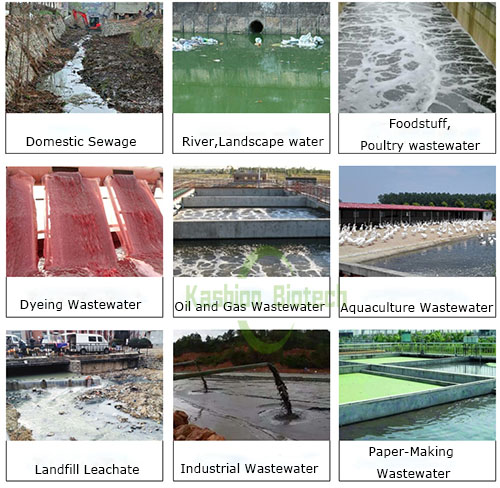
Home Products Sewage Treatment Bacteria Dyeing Textile Wastewater Treatment Printing and Dyeing Wastewater Treatment
|
Product State |
Solid powder (Viable bacteria content>10Billions/g) |
Application |
Slaughter wastewater, industrial wastewater, pharmaceutical wastewater, sanitary wastewater, river regulation, waste osmotic fluid |
|
Storage Method |
Store in a dry and cool place, do not expose to the sun or damp |
Shelf Life |
Sealed for 2 years and unsealed for 2 months. |
|
Safety |
Non toxic and harmless |
Main Components |
Denitrifying bacteria、enzyme、activator, etc. (Biological enzyme: It is a catalytic organic matter produced by living cells, most of which are proteins, and a very small part of them are RNA.) |
|
Tests show that the following physical and chemical parameters are most effective for bacterial growth: |
|||
|
PH Value |
The average range is 5.5~9.5 |
Temperature |
Take effect between 10℃~60℃ |
|
Dissolved Oxygen |
Lack of /anaerobic tank ≤0.5mg/L |
||
|
Salinity |
Tolerates 6% salinity |
Anti-toxicity |
Effectively resist chemical toxic substances, including chloride, cyanide and heavy metals. (Note: When the contaminated area contains fungicides, their effects on microorganisms should be studied in advance.) |
|
Usage and dosage |
* If the sewage not be discharged in a week, it can be added at one time, 200g/m3. * If the inlet and outlet of sewage cannot be controlled, or there are inlet and outlet every day, add 18-20g/m3 every day for 12-15 consecutive days. (Calculate according to the volume of biochemical tank) |
||
|
Product Function |
1. It can effectively improve the biochemical removal efficiency of nitrate and nitrite in water. At the same time, the product is compounded with biological enzymes, nutrients and catalysts, which can effectively decompose macromolecular organic matter in water into small molecules and improve the growth and reproduction rate of microorganisms. 2. Degrade sediment organic matter, reduce COD, reduce sludge production, absorb phosphate in water, reduce total phosphorus content, and avoid secondary pollution problems 3. Minimize the impact of systems with insufficient safety factor on denitrification and nitrification |
||

Name: Nicole Yu
Mobile:+86 17718148007
Tel:+86 17718148007
Whatsapp:8617718148007
Email:sales@kashionbiotech.com
Add:No.6, Zhanxi Road, Yaohai District, Hefei City, Anhui Province, China.